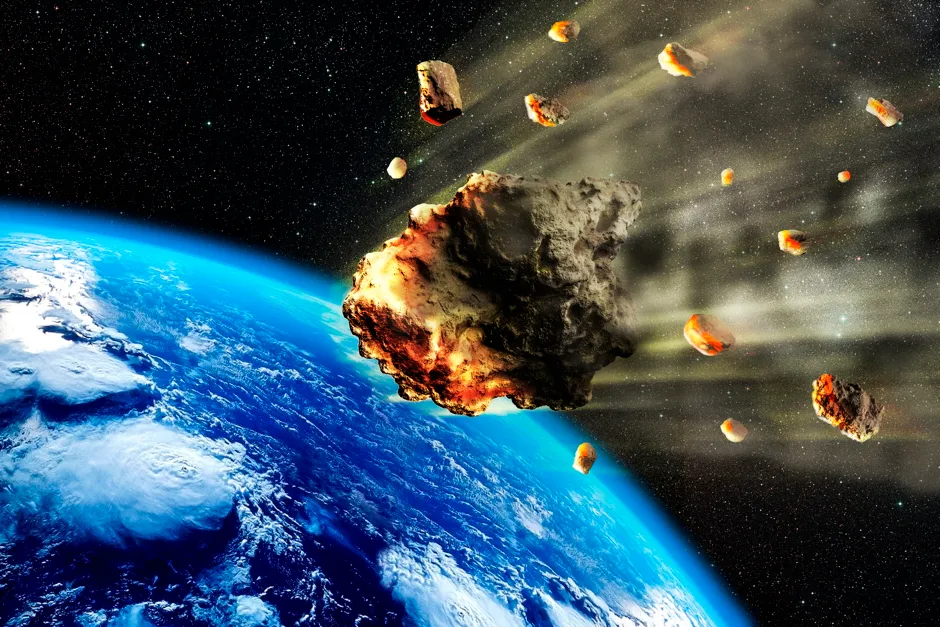If you believe some recent headlines, an asteroid is threatening to derail democracy by blasting into Earth on 2 November – the day before the US elections. In reality, the space rock, called 2018 VP1, has only a 0.41 per cent (1 in 240) chance of hitting us.
And even if it does, it’s only around two metres in diameter, so it’ll disintegrate in the atmosphere long before it’s had chance to ruffle any presidential hairdos.
As its name suggests, 2018 VP1 was discovered in 2018, and it’s just one of around 23,600 ‘near-Earth objects’ (NEOs) being tracked by NASA’s Center for NEO Studies (CNEOS).
NEOs are Solar System bodies which have orbits that bring them in close proximity to us (defined as coming within around 200 million kilometres of the Sun). A small number of NEOs are comets, but over 99 per cent are asteroids – rocky objects that are the leftover building blocks from the formation of the Solar System.

To work out the possibility of a NEO hitting Earth, CNEOS calculates the object’s orbit around the Sun using data provided by observatories around the world. The more observations CNEOS has of a NEO, the better it can pin down the object’s future trajectory.
The asteroids that pose the most risk are classed as ‘potentially hazardous asteroids’ (PHAs). These are calculated to come within around 7.5 million kilometres of Earth (approximately 20 times the distance from the Earth to the Moon) and are more than 140 metres in diameter. There are currently around 2,100 PHAs on NASA’s books.
A 140-metre-wide asteroid could devastate an area the size of the UK, says Dr Paul Chodas, director of CNEOS, “but even small asteroids can cause significant damage”.
For example, the Chelyabinsk meteor, which took astronomers by surprise when it exploded above Russia in February 2013, was caused by an asteroid only 20 metres wide. The shock wave from the explosion was powerful enough to cause 1,500 indirect injuries, mostly due to flying glass from shattered windows.

The smallest asteroids, such as 2018 VP1, are extremely common, says Chodas. “A two-metre object hits the Earth every couple of months.” But these aren’t a concern, because they burn up in the atmosphere.
“The time between impacts gets exponentially longer as you go to larger asteroid sizes,” says Chodas. Asteroids the size of the Chelyabinsk one are estimated to enter the Earth’s atmosphere, on average, once every 80 years. “Once you go up to the size of PHAs – 140 metres – you can expect an impact, on average, only once every 20,000 years,” says Chodas.
And asteroids of the size that killed the dinosaurs – roughly 10 kilometres wide – happen around once every 100 million years. But Chodas says that these probabilities can’t be used to predict when the next impact will happen. “It doesn’t happen like clockwork,” he says.
So what proportion of NEOs have we discovered? By looking for NEOs in the night sky – visible to telescopes as moving dots of light – and keeping tabs on which are newly discovered, and which have been spotted before, CNEOS scientists are able to estimate the total population of NEOs.
Chodas says that they’ve so far found about 95 per cent of one-kilometre-wide asteroids and larger, and around 40 per cent of asteroids measuring 140 metres wide and larger.
Read more from Reality Check:
- Should we infect people with COVID-19 for vaccine research?
- Can mindfulness and meditation be harmful?
- Natural remedies: Can honey really help cure a cold?
The Chelyabinsk NEO managed to sneak past telescopes because of its small size (the smaller the object, the fainter it is), and because it came from the direction of the Sun, which made it impossible to see against the glare. But the larger, more threatening asteroids can be seen further away, says Chodas, and this gives us more chance of spotting them in the night sky, hopefully providing us with “years or decades” of advance warning.
This should give scientists enough time to prepare what’s known as a ‘deflection’ mission, which aims to nudge the trajectory of the incoming asteroid so that it misses the Earth – by ramming a spacecraft into the asteroid, for instance.
There is still a possibility, says Chodas, that a large asteroid could take us by surprise if it was on an orbit that only brought it into close proximity with the Earth very rarely. In such a case, we might only have a few months’ warning – too short for a deflection mission, but perhaps enough time for a ‘disruption’ mission, where the asteroid is blown up by, for example, firing a nuclear device at it.
“But we’re driving down the chances of this happening by continually scanning the skies, and by making our telescopes more sensitive so that they can see asteroids that are farther out,” says Chodas.
In the end, it all comes down to what we choose to worry about. The odds of a sizeable asteroid catching us unaware are so small, says Chodas, that there’s plenty of other bad stuff out there that’s more likely to happen to us. “The threat of an asteroid impact doesn’t keep me awake at night,” he says.
Visit the BBC's Reality Check website at bit.ly/reality_check_ or follow them on Twitter@BBCRealityCheck